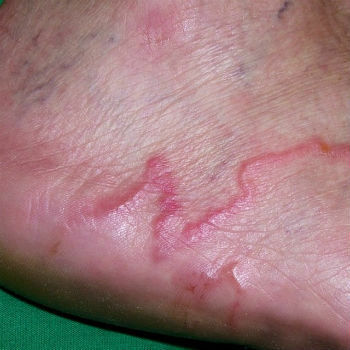O babassu is a type of palm found in several areas of Latin America, and, in Brazil, it occurs mainly in Mato Grosso, Tocantins, Maranhão and Piauí. This plant, belonging to the Arecaceae family, is very common in disturbed environments.
The babassu (Orbignya phalerata) çIt is characterized by its fruits (coconuts) that begin to be produced only when the plant is over eight years old. These coconuts appear in bunches, which can have up to 500 fruits. Usually the plant blooms between the months of January and April.
This fruit is used in the most varied ways, being used practically every part of it. The outermost layer (epicarp), for example, can be used for the manufacture of tree fern fiber, upholstery, packaging, vases and even as an organic fertilizer. The layer just below the epicarp (mesocarp) is used in making a flour as it is rich in starch. The endocarp, a more resistant region located just below the mesocarp, is used for the manufacture of handicrafts, in addition to serving as a substitute for firewood. Finally, we have almonds, which are used for a variety of purposes, such as food and cosmetics.
The flour produced from the babassu coconut mesocarp is widely sold and its main properties are anti-inflammatory, immunomodulating, analgesic and antipyretic. Babassu oil is one of the products that arouse the greatest interest, being widely used by the communities where babassu trees are found. This oil is edible, but its main use is in the production of soap and cosmetics.
Do not stop now... There's more after the advertising ;)
To obtain the oil, initially, the almonds are ground. After this time, the almonds are cooked to facilitate the release of oil. This material is then pressed, and the oil is separated. Finally, it undergoes decantation and filtration processes.
Several studies indicate the great potential of the oil also as a product that can be used in the manufacture of biodiesel, demonstrating, once again, the great versatility of this plant.
Due to its diversity of products and by-products, its extractivism is great. Collections are normally made when the fruit starts to fall. It is very important to highlight that the ideal is not to remove the whole bunches, since many times the bunch does not have all the ripe coconuts.
Coconut cracking is usually done manually using the traditional method. Commonly, women living in these areas break coconuts on the ground next to palm trees. These women became known as “breakers”.
by Vanessa dos Santos
Graduated in Biology
Would you like to reference this text in a school or academic work? Look:
SANTOS, Vanessa Sardinha dos. "Babaaçu"; Brazil School. Available in: https://brasilescola.uol.com.br/biologia/babacu.htm. Accessed on June 28, 2021.



